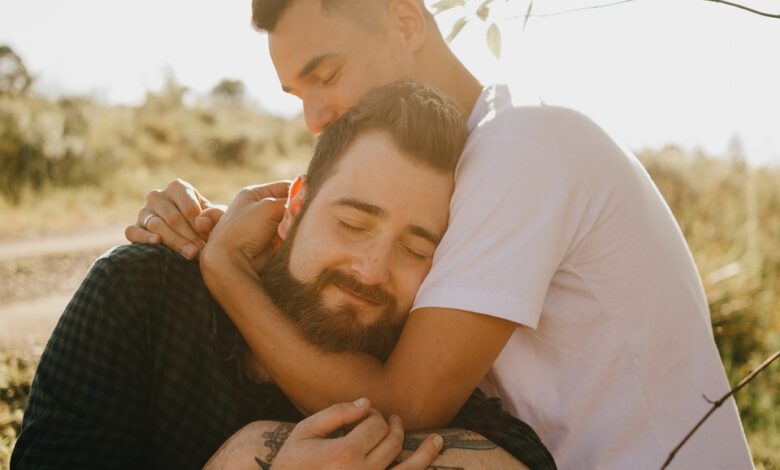Breaking Barriers: The Struggle for LGBT Rights and Equality

Introduction
In recent years, the fight for lesbian, gay, bisexual, and transgender (LGBT) rights and equality has gained momentum worldwide. While significant progress has been made in some nations, countless challenges persist. This article delves into the historical struggle for LGBT rights, explores the barriers that have impeded progress, and highlights recent breakthroughs towards achieving equality.
A Historical Perspective
The history of the LGBT rights movement can be traced back several decades. The fight for equality began gaining prominence in the 1960s with the emergence of the modern gay rights movement. Groundbreaking events, such as the Stonewall riots of 1969, thrust the movement into the public eye.
Since then, LGBT activists have tirelessly fought for recognition, promoting inclusivity and challenging the deeply ingrained discriminatory beliefs and practices within societies worldwide. The movement has evolved significantly, with milestones including decriminalization of homosexuality in several nations, the establishment of civil partnership laws, and, more significantly, the legalization of same-sex marriage in numerous countries.
Breaking Barriers: The Struggle for LGBT Rights
Despite these significant milestones, breaking barriers and achieving full equality remains a constant struggle for the LGBT community. Several barriers, both legal and social, continue to hinder progress.
1. Legal Barriers
In many parts of the world, individuals can still face imprisonment, violence, or even the death penalty based on their sexual orientation or gender identity. Homosexuality is criminalized in more than 70 countries today, creating a hostile climate for LGBT individuals. These discriminatory laws enable systematic oppression, forcing individuals into concealment and fostering a culture of fear.
2. Social Stigma
Social stigma remains one of the most pervasive barriers to LGBT rights. Deep-rooted prejudice and stereotypes still persist, fueling discrimination, rejection, and harassment. LGBT individuals often face isolation from their families and communities, leading to profound emotional and mental health challenges.
3. Lack of Protections
A significant barrier to achieving LGBT rights revolves around the lack of legal protections. In many countries, there are no anti-discrimination laws that specifically protect individuals based on sexual orientation or gender identity. This absence enables employment and housing discrimination, limiting opportunities for advancement and endorsing a system of inequality.
4. Religious and Cultural Obstacles
Religious and cultural barriers pose severe challenges to LGBT rights around the world. Many religious doctrines condemn homosexuality, creating conflicts between religious freedom and sexual orientation. Cultural norms rooted in traditional beliefs can lead to the systemic marginalization and exclusion of LGBT individuals from society.
Steps Towards Equality: Recent Breakthroughs
Despite these barriers, the LGBT rights movement has witnessed significant progress in recent years. Empowered by activists, allies, and global recognition, a wave of change has begun to break through long-standing obstacles.
1. Marriage Equality
One of the most significant breakthroughs for LGBT rights has been the legalization of same-sex marriage in numerous countries. Countries such as Canada, the United States, Argentina, and South Africa have recognized same-sex unions, granting LGBT individuals equal access to the institution of marriage. This recognition not only affirms their love and commitment but also grants them legal protection and benefits.
2. Legal Advancements
In many parts of the world, there has been a gradual shift towards supporting LGBT rights through legal reforms. Several countries have enacted or enhanced anti-discrimination laws that cover sexual orientation and gender identity. These laws serve as crucial protections, ensuring equality in areas such as employment, housing, and healthcare.
3. Transgender Rights
The fight for transgender rights has gained significant visibility and recognition in recent years. Transgender individuals, who often face increased discrimination and violence, have made important strides towards equality. Many countries have recognized and protected gender identity rights through legislation, allowing individuals the right to change their legal gender and providing avenues for healthcare, education, and employment support.
4. Increased Acceptance and Visibility
Perhaps one of the most significant breakthroughs has been society’s increased acceptance and visibility of the LGBT community. Through media representation, education, and advocacy, barriers are gradually being dismantled. Many notable figures have come out as LGBT, normalizing diverse sexual orientations and gender identities. This increased acceptance and visibility helps combat social stigma and fosters an inclusive society.
Conclusion
The struggle for LGBT rights and equality is an ongoing battle, marked by milestones and setbacks. Legal and social barriers continue to impede progress, perpetuating inequality and discrimination. However, significant advancements have been made in recent years, demonstrating a global shift towards inclusivity, acceptance, and equality. With continued activism, awareness, and legislation, the breaking of barriers and the achievement of full LGBT rights and equality is within reach.
Nada Foundation
to help girls and women



